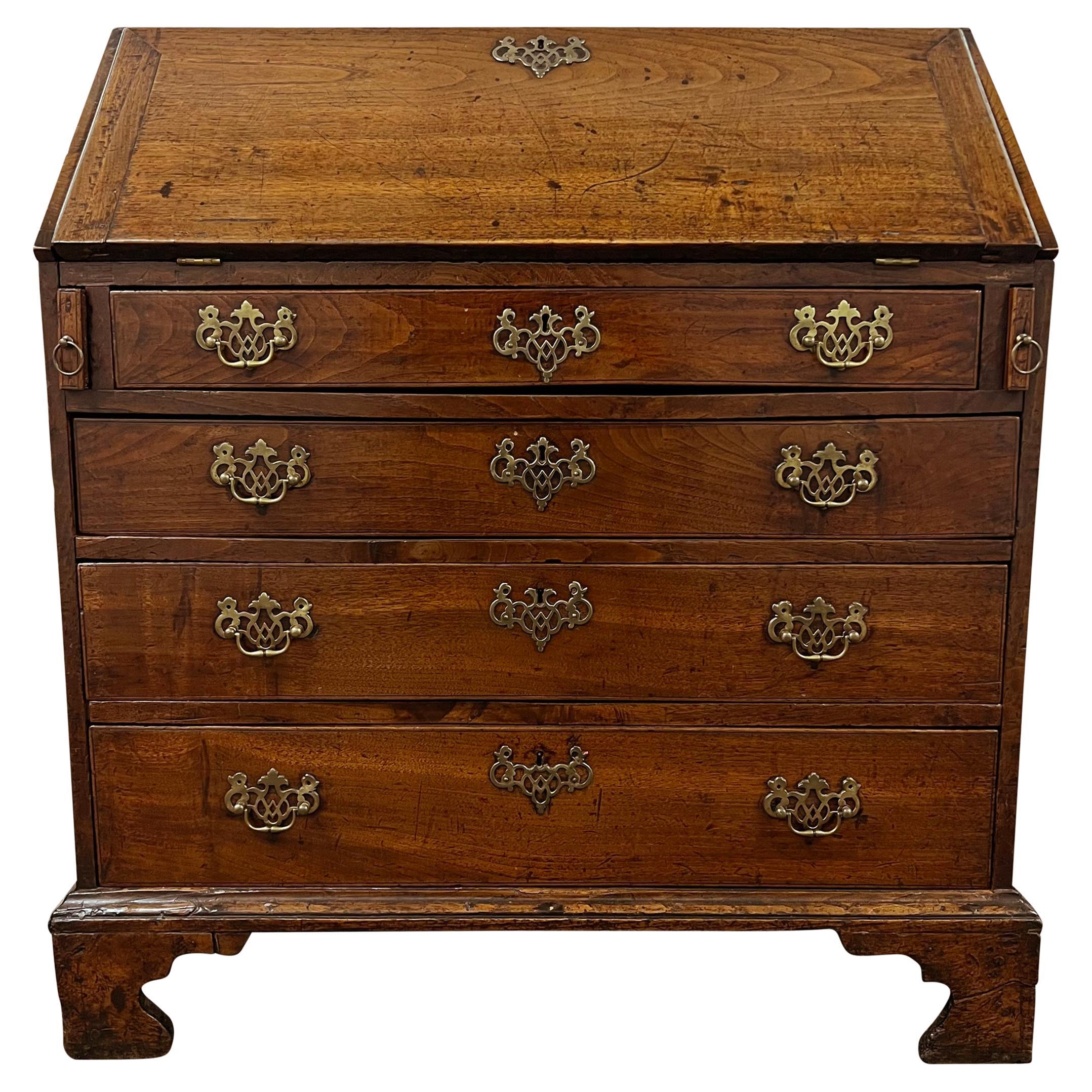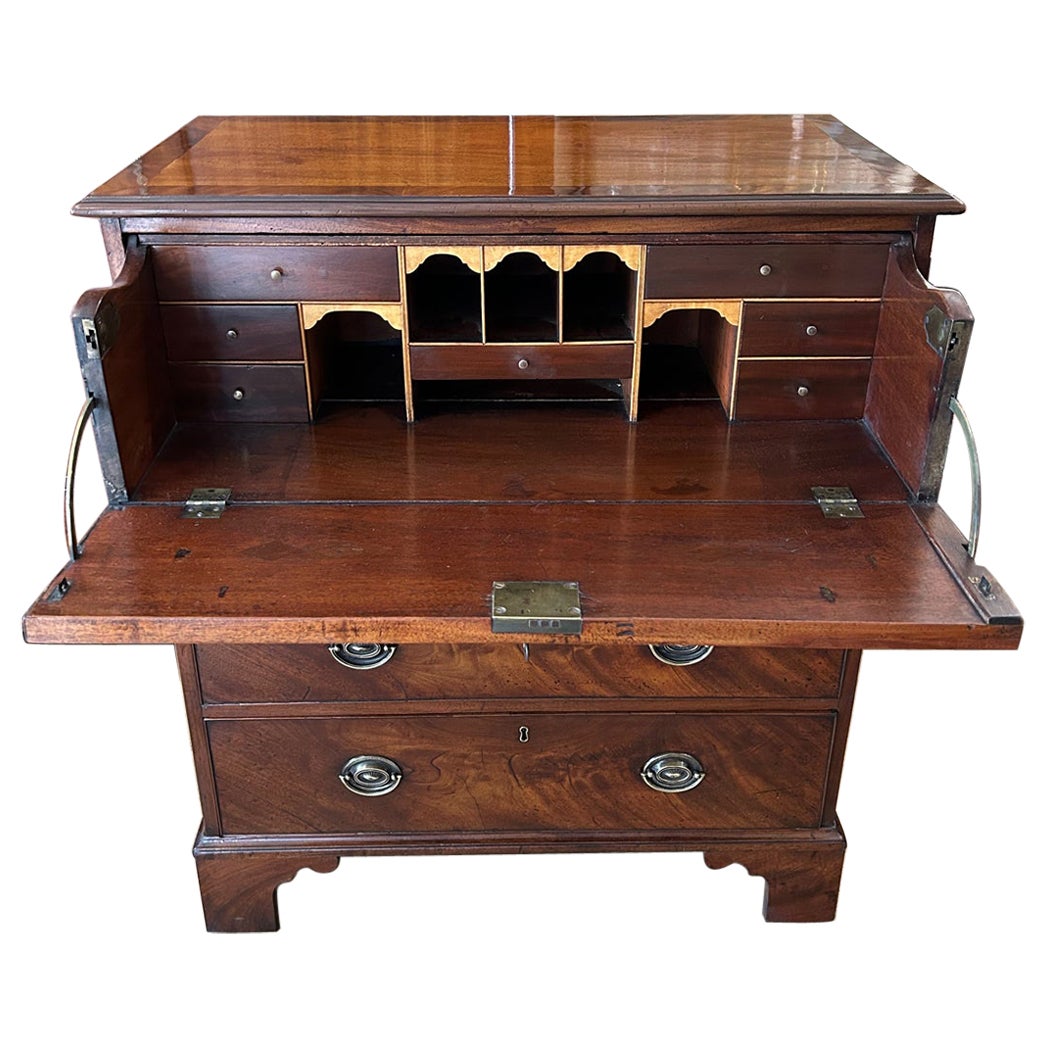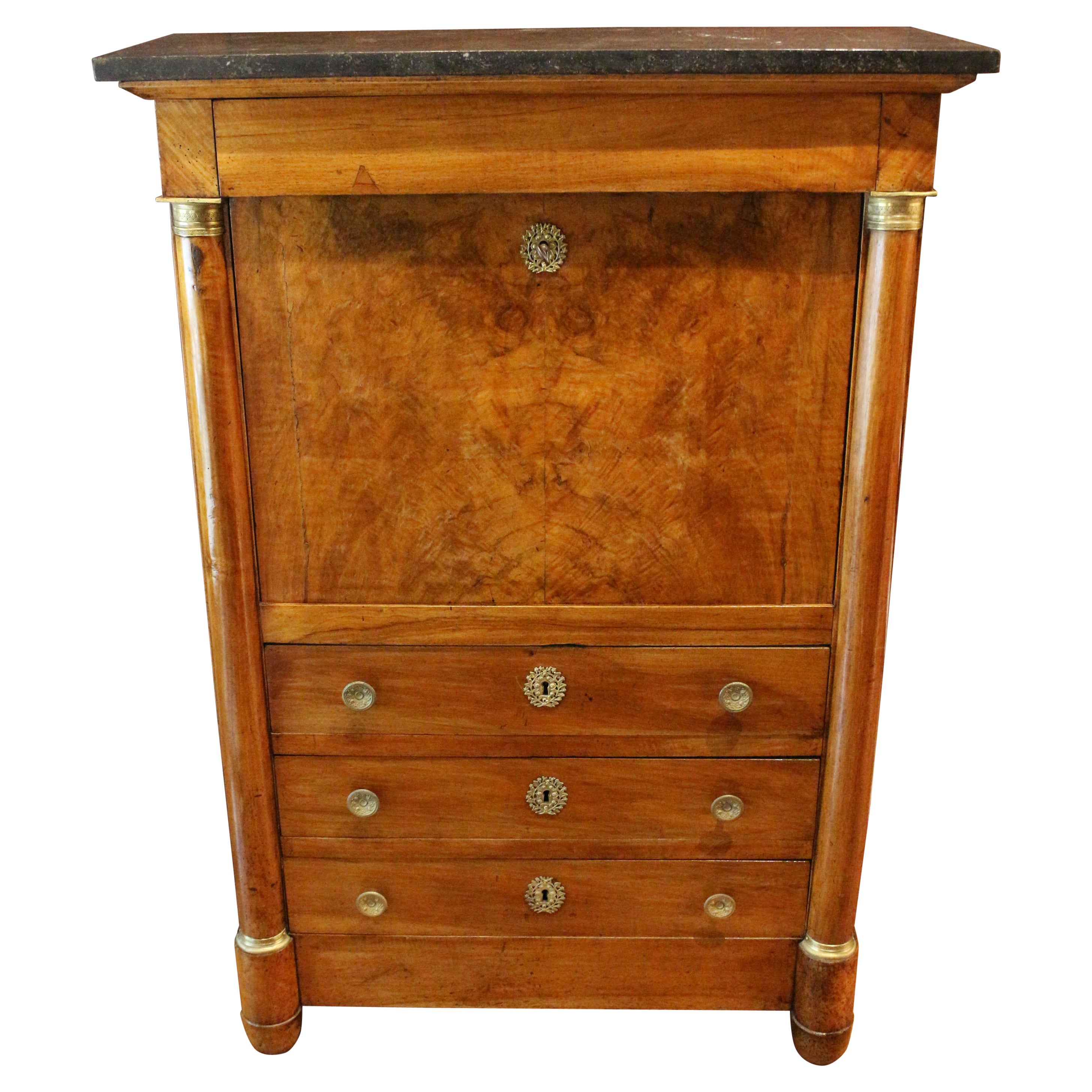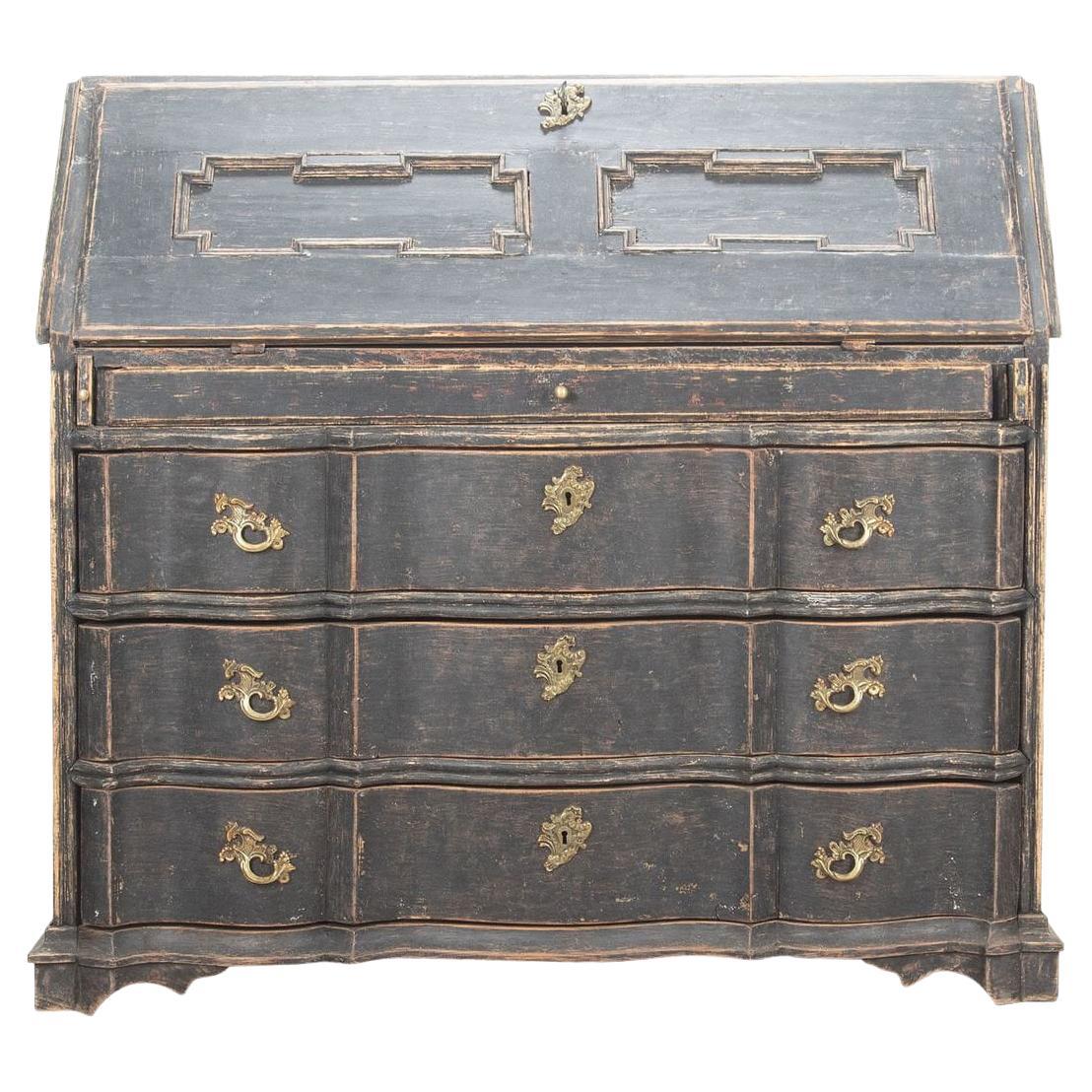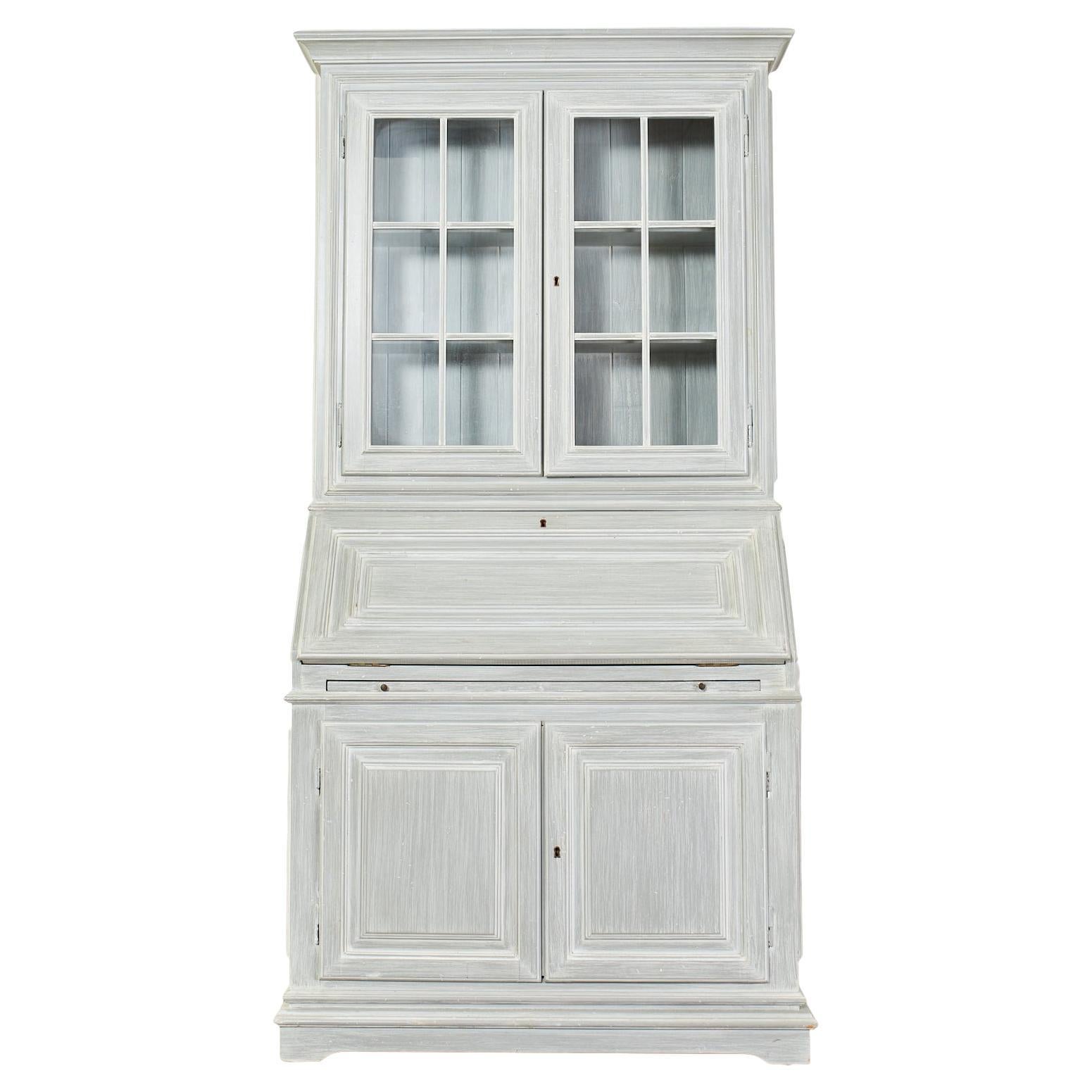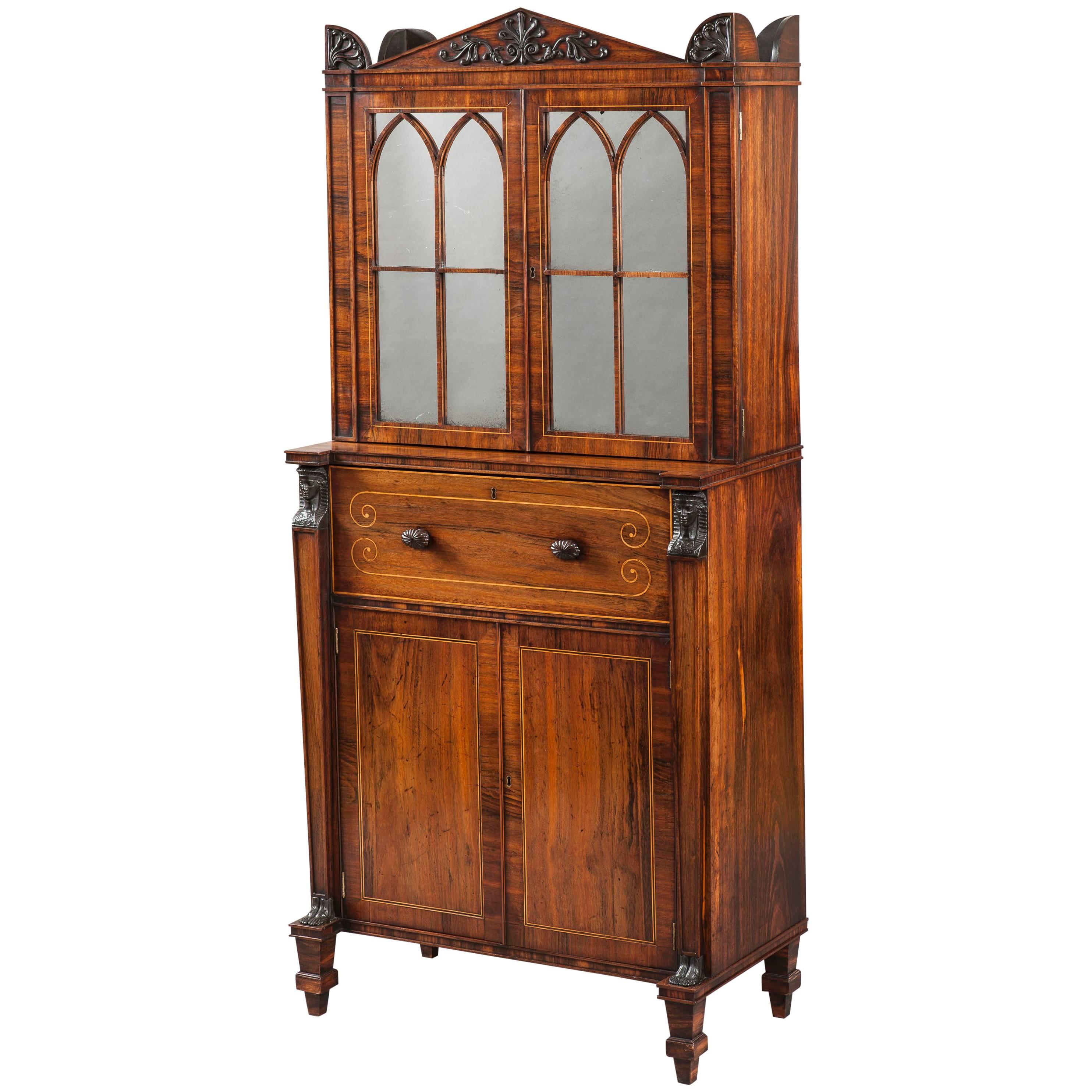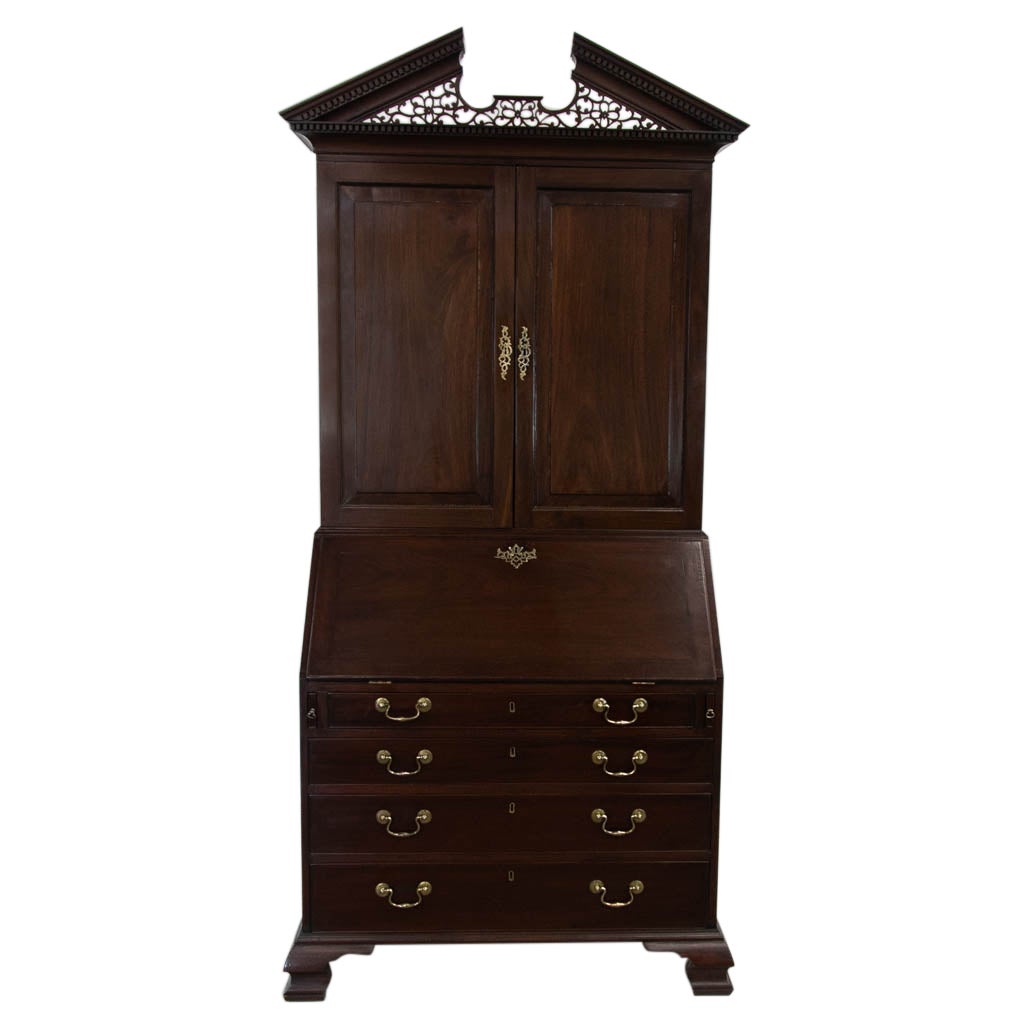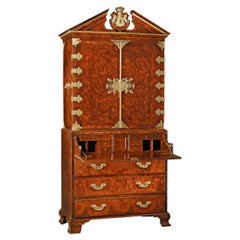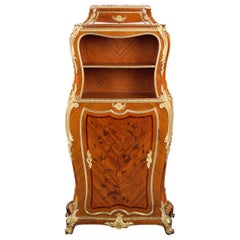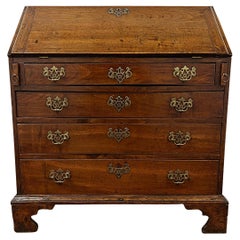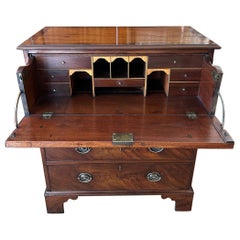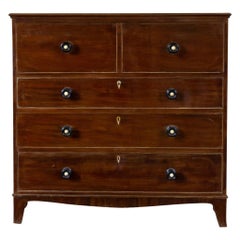
Chippendale Period Georgian Secrétaire
View Similar Items
Want more images or videos?
Request additional images or videos from the seller
1 of 8
Chippendale Period Georgian Secrétaire
About the Item
- Dimensions:Height: 102.5 in (260.35 cm)Width: 42 in (106.68 cm)Depth: 24.25 in (61.6 cm)
- Style:Chippendale (In the Style Of)
- Materials and Techniques:
- Place of Origin:
- Period:
- Date of Manufacture:circa 1770
- Condition:
- Seller Location:New Orleans, LA
- Reference Number:Seller: 29-23361stDibs: LU89116933273
About the Seller
5.0
Recognized Seller
These prestigious sellers are industry leaders and represent the highest echelon for item quality and design.
Established in 1912
1stDibs seller since 2010
93 sales on 1stDibs
Typical response time: 7 hours
More From This SellerView All
- King George I Ambassadorial Secrétaire-CabinetLocated in New Orleans, LAThis highly important secrétaire-cabinet was crafted for and specially ordered by King George I for the British Ambassador to Russia. From its craftsmanship and materials to its exceptional artistry, it is a work of royal and historic significance that exudes power in each and every detail. The broken pediment at its apex features the simplified royal coat of arms bearing the king’s crown, while the interior is adorned by portraits of the British Royal Family. Placed within the ambassador’s St. Petersburg home, this entirely unique piece of furniture would have been a potent reminder of England's grandeur and political importance. Relations between England and Russia during this period were at an all-time high. Peter the Great had traveled to England in 1698 as part of his widely known “Grand Embassy” tour, wherein he attempted to gain foreign support against the Ottoman Empire. He spent a period of nearly four months there, meeting with King William III and his court on numerous occasions. Noted academic Arthur MacGregor wrote concerning the impact of the trip, “For two decades following Peter's visit, British influence in Russia reached a peak. It manifested itself in social custom, in craft practice and in ships and naval organization... it reached a significant sector of the population before relations cooled once again and the two nations pulled back from this era of unprecedented cordiality.” First and foremost, however, it is a reminder of British might and influence. By the reign of King George I, England had come into its own as a world power. Unique in its design, this cabinet is a reflection of the country’s might. It is crafted from the highest-quality solid walnut and burr walnut adorned by gilded lock plates and engraved hinges. The presence of ormolu at its apex and lining the doors was a rarity for this period, and its addition makes manifest the importance of the design. The outer doors open to reveal multiple interiors, including fifteen separate drawers around a central cupboard; the cupboard doors each bear mezzotint portraits of George I and his father, Ernest Augustus, Elector of Hanover. An etching after the portrait of George I dating to circa 1716 is in London’s Royal Academy. A second, inner pair of doors are adorned by mezzotints of the Prince and Princess of Wales (later Queen Caroline and George II), which are both after portraits by Sir Godfrey Kneller dated 1716 in the Royal Collection. A final portrait is revealed on the very interior of the cabinet, where a mezzotint of Frederick, Anne, Amelia and Caroline, children of the Prince of Wales, resides. An etching (circa 1715-1720) after this portrait can be found in the National Portrait Gallery (London). Apart from its abundance of royal portraiture, the cabinet features stunning painted decoration, including floral designs as well as clouds, birds and trees in a bucolic motif reminiscent of Eden. Its lower portion is a study in both form and function, featuring a fitted secrétaire-drawer above three additional drawers for storage. The cabinet appears in The Shorter Dictionary of English Furniture by R. Edwards from 1964, a text that is regarded as the bible of British furniture design. Edwards describes it as a “writing cabinet...given by George I to the British Ambassador at the Russian court.” The cabinet was likely made for the 18th-century German diplomat and writer Friedrich Christian Weber, who represented English interests at the Russian court from 1714 until 1719. Although Weber’s tenure as ambassador was relatively short, while in St. Petersburg, he authored his account entitled Das veraenderte Russland (The Present State of Russia), which was published in three volumes in 1721, 1739 and 1740. It may, however, also have been made for George Douglas, 2nd Earl of Dumbarton, who served as ambassador alongside Weber in 1716. Diplomatic relations ceased between the two countries in 1721. In 1928, the cabinet appeared for sale at the International Exhibition of Antiques & Works of Art in Olympia. It had previously been in the collection of the Woltner family of Bordeaux, the celebrated vintners who owned the estate Château Laville Haut-Brion and produced wine of the same name. According to the family, Monsieur Woltner was given the cabinet as a gift from an aunt who lived in Russia for many years. After leaving the Woltner collection, the cabinet was acquired by William Berry...Category
Antique 18th Century English Georgian Secretaires
MaterialsBrass
- 19th Century French Secrétaire by DurandBy Gervais DurandLocated in New Orleans, LASuperior craftsmanship and intricate marquetry characterize this rare secrétaire by Gervais-Maximilien-Eugène Durand, one of the most popular French ébénistes of the 19th century. Th...Category
Antique 19th Century French Louis XV Secretaires
MaterialsBronze, Ormolu
- George III Chippendale-Period Serpentine CommodeBy Thomas ChippendaleLocated in New Orleans, LAThis rare 18th-century serpentine chest of drawers was crafted in the style of the iconic Thomas Chippendale. The George III mahogany dresser is complete with its original brass hand...Category
Antique 18th Century English Chippendale Commodes and Chests of Drawers
MaterialsBrass
- 18th Century English SecretaryLocated in New Orleans, LAQueen Anne period furnishings such as this walnut secretary are incredibly rare and important examples of English cabinetmaking. This secretary is of the most outstanding caliber, boasting desirable double bonnet, mirrored cabinet doors...Category
Antique 18th Century English Queen Anne Secretaires
MaterialsWalnut
$88,500 - Chippendale Style Dining Chairs SetLocated in New Orleans, LAA fine set of ten 19th century English Chippendale style mahogany dining room chairs. The set includes eight side chairs and two armchairs. The front legs have carved ball and claw f...Category
Antique 19th Century English Chippendale Dining Room Chairs
MaterialsUpholstery, Mahogany
$88,500 / set - Chippendale-Style Mahogany Dining ChairsLocated in New Orleans, LAAn outstanding set of Chippendale-style dining chairs, created from designs by Thomas Chippendale, one of history's most celebrated artisans. A testimony to the incredible workmanshi...Category
Antique 19th Century English Chippendale Dining Room Chairs
MaterialsLeather, Mahogany
$88,500 / set
You May Also Like
- 18th Century English Chippendale SecretaireLocated in Chicago, ILStep into the grace and sophistication of the 18th century with our exquisite English oak secretaire, an embodiment of Georgian Chippendale-style craftsmanship. Elegantly merging for...Category
Antique 18th Century English Chippendale Secretaires
MaterialsBrass
- 19th Century Georgian Mahogany SecretaireLocated in Richmond, Surrey19th Century Georgian Mahogany Secretaire has a fitted desk drawer over three long drawers with brass oval handles. The fitted desk drawer interior has a writing surface with 7 strun...Category
Antique 19th Century English Georgian Secretaires
MaterialsMahogany
- Georgian English Mahogany Commode Secretaire, 1816Located in Beuzevillette, FRImportant English commode secretary from the Georgian period with three large drawers. The upper part simulating two drawers is made of a flap which forms the work table covered with...Category
Antique 1810s English Georgian Secretaires
MaterialsWood
- Georgian-Inspired Miniature Italian Walnut SecretaireLocated in Los Angeles, CAThis stunning Miniature Italian walnut Secretaire is not only a remarkable piece of furniture but also a tribute to the iconic era of King George I. Inspired by the pieces built during this period, this Secretaire exudes the grandeur and elegance of the Georgian era. Crafted with meticulous attention to detail, the Secretaire features exquisite crossbanding of mahogany and Italian walnut that was popular during the Georgian period. The four center drawers and the slant top desk with locks and keys further reflect the practicality and functionality that were hallmarks of furniture built during the time of King George I. French polished in the traditional style, this Secretaire boasts a gleaming finish that brings out the natural beauty of the Italian walnut wood. The slant top desk also reveals four small drawers on top with a center compartment, which is a characteristic feature of Georgian furniture. This miniature Italian Walnut Secretaire is a masterpiece that captures the essence of the Georgian era, making it a valuable addition to any collection of antique or vintage furniture...Category
Early 2000s Georgian Secretaires
MaterialsMahogany, Walnut
- Circa 1810 Empire Period Secretaire à AbatantLocated in Chapel Hill, NCEmpire period, c.1810, Secretaire à Abatant, French. Walnut. Demi-columns with bronze dore mounts. Bronze dore pulls & escutcheons. Chic black marble top with white-grey figure. Grea...Category
Antique 1810s French Empire Secretaires
MaterialsBronze
- French Secretaire à Abattant, First Empire PeriodLocated in Montreal, QuebecFrench first Empire period Secretaire à Abattant, also known as a drop-front secretary, fall front or cantilevered desk. Under the dark grey marble top is a secret, entablature drawe...Category
Antique Early 19th Century French Empire Secretaires
MaterialsMarble, Bronze
Recently Viewed
View AllMore Ways To Browse
Small Drop Front Secretary
Sheraton Mahogany Secretary
Danish Rosewood Secretary Desk
Italian Burl Secretary
Swedish Baroque Cabinet Secretary
Swedish Rococo Style Bureau Secretaire
Swedish Secretary Hutch
Thomasville Secretaries
Thomasville Secretary
Victorian Cylinder Secretary
1820s Birch Biedermeier Cabinet
Antique Secretary Curio Cabinet
Antique Secretary Curio
Antique Secretary Desk Curio Cabinet
Baker Furniture Secretary Country French
Ebonised Secretary
Federal Hepplewhite Secretary
Fine And Rare 18th Century George 1 Virginia
